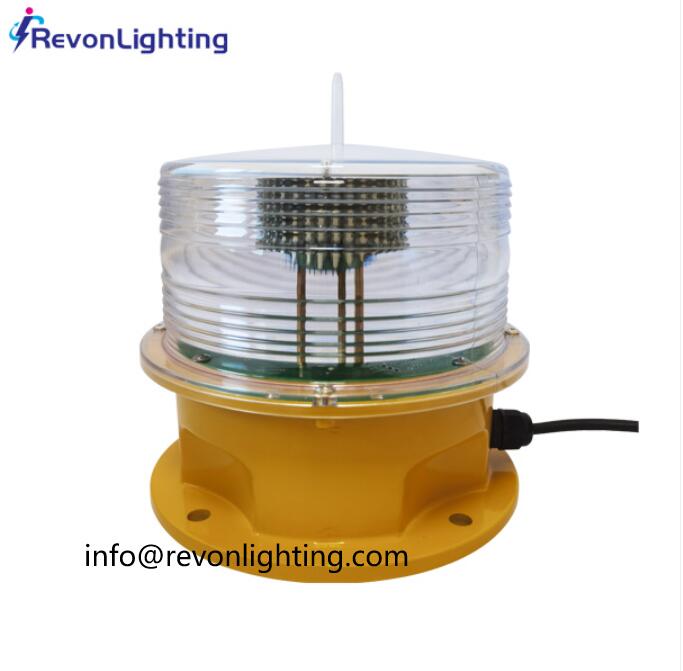Heliport beacons play a vital role in aviation by providing essential visual guidance and safety measures for helicopter pilots. These beacons, also known as heliport lights, are specifically designed to assist helicopters in landing, taking off, and navigating around heliports. This article will explore the significance, features, and advancements of heliport beacons in ensuring safe air navigation.
Significance of Heliport Beacons:
Identification and Visibility:
Heliport beacons serve as a key identification tool for pilots. By emitting a distinctive and recognizable light pattern, these beacons enable pilots to easily identify heliports from a considerable distance, especially during low visibility conditions or at night. This enhances situational awareness and aids in smooth and efficient landing operations.

Obstacle Avoidance:
Heliport beacons also play a crucial role in obstacle avoidance. By providing a clear visual reference point, these beacons help pilots identify potential obstacles, such as tall structures or power lines, in the vicinity of the heliport. This information allows pilots to make informed decisions and adjust their flight paths accordingly, reducing the risk of accidents or collisions.
| Heliport Beacon | Heliport Beacons |
Helipad Alignment:
Accurate alignment is essential for safe helicopter landings and take-offs. Heliport beacons provide a precise visual reference for pilots, helping them align their approach and departure paths with the designated helipad. This ensures safe and efficient operations, especially in congested or challenging landing areas.
Features of Heliport Beacons:
High-Intensity Lighting:
Heliport beacons utilize high-intensity lighting systems to create a bright and easily visible signal. These lights are often composed of LEDs or xenon strobe lamps, ensuring maximum visibility even in adverse weather conditions or during the daytime. The high intensity of these lights enhances the beacon's effectiveness as a navigational aid.
Light Sequences and Colors:
Heliport beacons emit specific light sequences and colors to convey important information to pilots. For example, a constant white light indicates the location of a heliport, while a flashing white light signals the presence of obstacles. These consistent and standardized signals enable pilots to quickly interpret the information and make appropriate decisions during flight operations.
Automated Control Systems:
Advancements in technology have led to the development of automated control systems for heliport beacons. These systems allow for remote monitoring, programming, and control of the beacons, thereby improving efficiency and reducing maintenance requirements. Automated control systems also enable operators to adjust the intensity, color, and timing of the lights based on specific requirements or changing environmental conditions.
Advancements in Heliport Beacons:
Integrated Weather Monitoring:
Modern heliport beacons can be integrated with weather monitoring systems. By incorporating sensors that detect weather conditions such as fog, rain, or low visibility, these beacons can automatically adjust their light intensity or flash frequency to optimize visibility for pilots. This integration enhances safety by providing real-time information on weather conditions and facilitating appropriate precautionary measures.
GPS Synchronization:
GPS synchronization allows heliport beacons to operate in sync with other navigational aids and communication systems. By precisely timing the flashing or pulsing of the lights, radar systems, and communication devices can easily identify the heliport location and provide accurate guidance to pilots. This synchronization improves navigation accuracy and reduces the risk of navigational errors.
Energy Efficiency:
Advancements in energy-efficient lighting technologies have been incorporated into heliport beacons. LED lights, in particular, offer significant energy savings compared to traditional lighting systems. This ensures longer operational life, reduced maintenance costs, and a smaller environmental footprint.
Conclusion:
Heliport beacons are essential for safe and efficient helicopter operations. By providing clear identification, obstacle avoidance, and helipad alignment, these beacons play a crucial role in ensuring the safety of pilots, passengers, and ground personnel. With features such as high-intensity lighting, automated control systems, and advancements in synchronization and weather monitoring, heliport beacons continue to evolve to meet the increasing demands of modern aviation. These advancements contribute to enhanced navigational safety and facilitate the growth of helicopter transportation in various industries.